Tokachi has a beautiful Hokkaido-like countryside and a series of mountains. The local gourmet that is popular in Obihiro City, the center of Tokachi, is the “buta don” introduced this time. In recent years, this dish has been eaten all over Hokkaido, but actually its birthplace is Obihiro City. It is so popular in the local area that it has been certified as “our local cuisine” by the Ministry of Agriculture, Forestry and Fisheries as a taste that we want to pass on to the next generation. Today, we are going to explore about this dish, Buta Don (豚丼) and let’s see what make this Japanese Buta Don so different from other rice dishes!
What is Buta Don?
Buta Don is a Japanese donburi or rice bowl dish that features cooked pork on top of rice, originated in Hokkaido prefecture. Pork, rice, and green onions are the main ingredients. Locals grill the pork loin or rib meat over charcoal in Japan to make it more aromatic. It is a dish of rice with grilled pork on top that locals serve with a sweet-salty sauce that contains soy sauce and others. They frequently offered this dish in restaurants in eastern Hokkaido as a Tokachi region specialty. Due to the BSE outbreak in 2003, it was created as an alternative menu for gyudon at a Japanese gyudon chain store.
Etymology
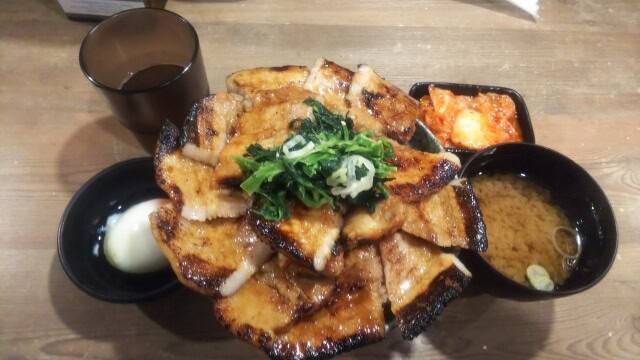
The name butadon is derived from two words – buta, meaning pork, and don, meaning bowl, so the dish can be translated as pork bowl. “Buta Don (豚丼)” as in its name “Buta (豚)” means “pig” in Japanese and “don (丼)” is short for donburi, the Japanese word for “bowl”.
Buta Don History
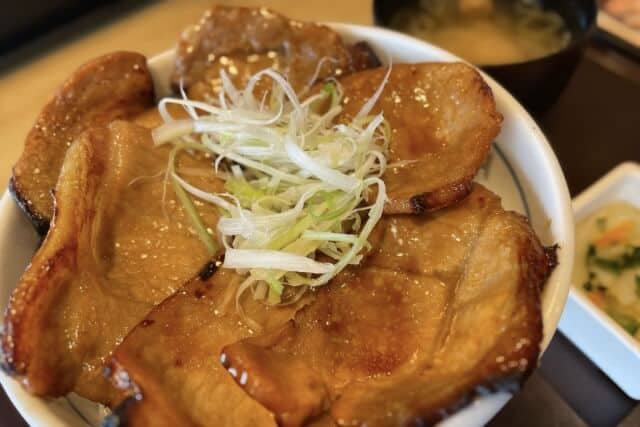
When pork became popular
To understand the history of the origin of butadon, it is necessary to go back to the time when pork became popular. Benzo Yoda and others were the ones who contributed to the development of Tokachi, and in the process, they made various attempts. One of them is the challenge of producing ham by raising pigs. However, most attempts fail. When they first cultivated the land, they were plagued by wildfires, large swarms of locusts, and bad weather.
Buta Don’s birth
The founder of Butadon, Mr. Shuji Abe, established the well-known restaurant “Pancho” in Obihiro in 1933 (Showa 8). They began by providing a range of menus, such omelet rice, curry, and oyakodon, but after realizing they would require a special menu to succeed, they focused on pork. Pork cutlets and hot pots were upscale gourmet dishes at the time. A special soy sauce-based sauce was created after being inspired by eel sauce.
Buta Don became widespread
When Pancho became a pork bowl specialty store, other restaurants in Obihiro began serving pork bowls. Each store has a culture of not encroaching on its specialty, but each store creates its butadon that is unique to its butadon. As a result, butadon (pork rice bowl) grew up as a specialty of Obihiro. Until then, pork bowls were a specialty of Tokachi, but in 2003, Yoshinoya and other beef bowl chains began selling pork bowls.
Buta Don Recipe
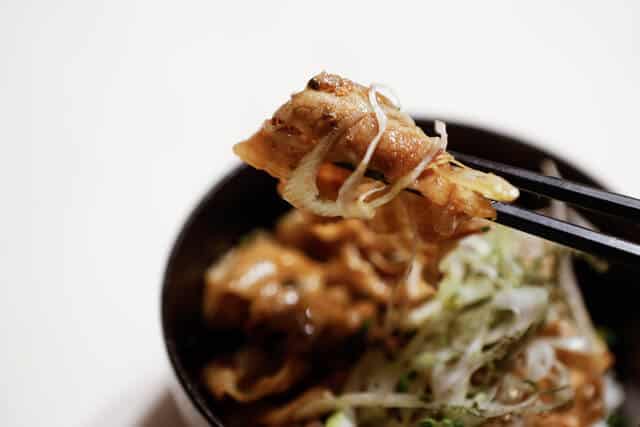
Buta Don Ingredients
| Ingredients of Buta don for 1 person | Measurements |
|---|---|
| Pork (loin) | 150g |
| Green onion | 15g |
| [Sauce for Tokachi pork bowl] Soy sauce | 28g |
| [Sauce for Tokachi pork bowl] Sugar | 14g |
| [Sauce for Tokachi pork bowl] Mirin | 7g |
| Rice (cooked) | 200g |
How to make Buta Don
Cut the green onion into appropriate lengths, make a notch on the surface, and remove the core inside. Open the surface and shred along the fibers to make white-haired green onions for topping. Then, cut the pork in 4-5 places to prevent it from curling up.
Heat the oil in a frying pan and place the meat in it. When the fat becomes transparent around it, turn it over. Flip it over and when it’s about 80% cooked, take it out of the frying pan.
Add the appropriate amount of sauce to the frying pan from which the meat was removed, and boil down a little. When the meat becomes a little thicker, put it back in the frying pan and turn it over to coat it with the sauce.
When the meat is well cooked and shiny, take it out and put it on top of the rice. Pour the juice remaining into the frying pan. Finally, put the white-haired green onion.
Sauce seasoning ratio
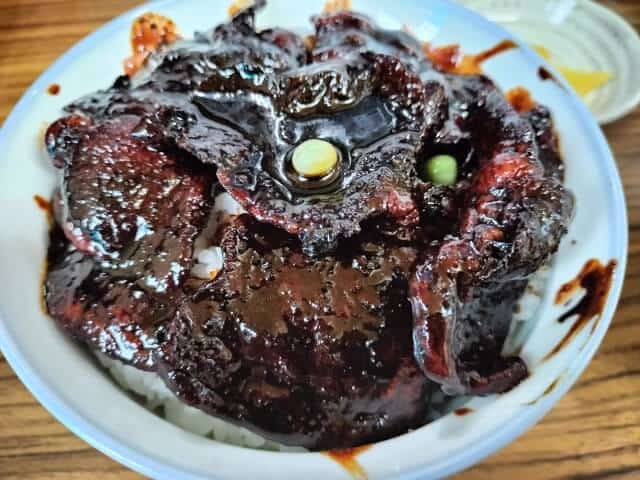
The golden ratio of seasoning is 1 (sugar): 2 (sake): 2 (soy sauce): 2 (water): 2 (mirin) is a seasoning that is often used in Japanese cuisine and is familiar to Japanese people. Please adjust the amount of sugar to your liking. If you use less, you can feel the taste of soy sauce. However, if you add too much, the original sweetness of the pork and onions will be lost. The white rice and ingredients absorbed the rich flavour of the sauce is a perfect match.
Health information about Butadon
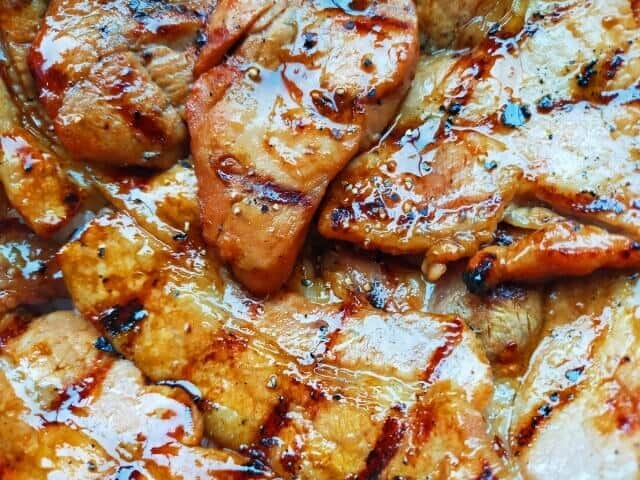
Compared to beef, pork has more than ten times the amount of B vitamins. For effective carbohydrate digestion, buta don made of white rice and pork makes sense. Carbohydrates produce heat and aid in regulating body temperature when they are metabolized into energy for muscles. Kids may consume it as food as well. Rich in vitamin B group and healthful Vitamin B1 (thiamine), which represents the vitamin B group, is directly tied to energy metabolism and essential for turning carbohydrates in the body into energy. It is ideal for cold areas due to its influence on maintaining body temperature.
Gyudon vs Buta Don
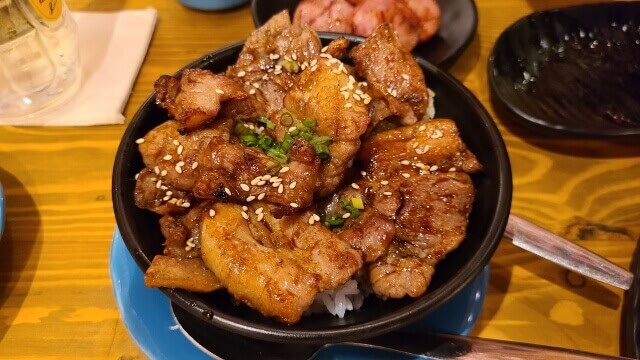
Gyudon restaurant’s Butadon was unpopular at first though they aimed to make Butadon like Gyudon. Because their sauce and cooking method of Gyudon did not match the pork of Butadon. Butadon is the pork version of gyudon, which is a rice bowl topped with beef. It originated in Obihiro, Hokkaido, but has long since spread across the nation. The dish has a stronger marinade flavour compared to gyudon. Typically, the sauce has a soy sauce and garlic flavour, which lends itself well to the higher fat content of pork.
FAQ
- What is the point of sauce for buta don?
Balance of sweet and spicy: The sauce should be neither too sweet nor too spicy.
- What kind of pork is used in a pork bowl?
Sangenton pork is mainly used for pork bowls, and ribs and shoulder loin with a good balance of fat and lean meat are especially favored. Also, easily prepared slices and offcuts are often used. This makes it possible to enjoy juicy and tasty pork bowls.
Where to buy Buta Don
Butaichi Obihiro (ぶたいち 帯広本店)

At Butaichi, a charcoal-grilled pork bowl specialty store run by a wholesale meat processing company, they marinated the in an original sauce and aged in a vacuum at a low temperature just before grilling. The meat that slowly accumulates flavor is juicy and very tender. Not only the meat, but also the ingredients for the sauce are fresh from Hokkaido.
Hana Tokachi (はなとかち)
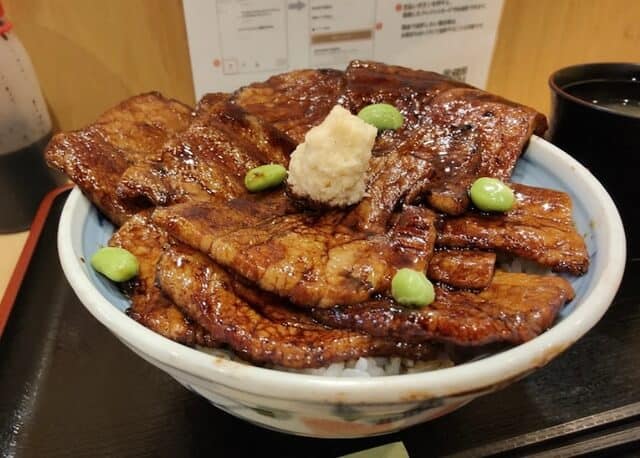
“Hana Tokachi” has a reputation for excellent quality meat and homemade additive-free sauce. They carefully selected the rib meat from Hokkaido with a good balance of fat and lean meat, and the loin meat uses a rare Hokkaido brand “Kamikomi Niku”. The [Butadon], which has plenty of roast meat, is available in medium size, small size, and children’s size. “Butadon Half-sized Meat” comes with miso soup and pickles for 780 yen.
Butadon Tonta (ぶた丼のとん田)
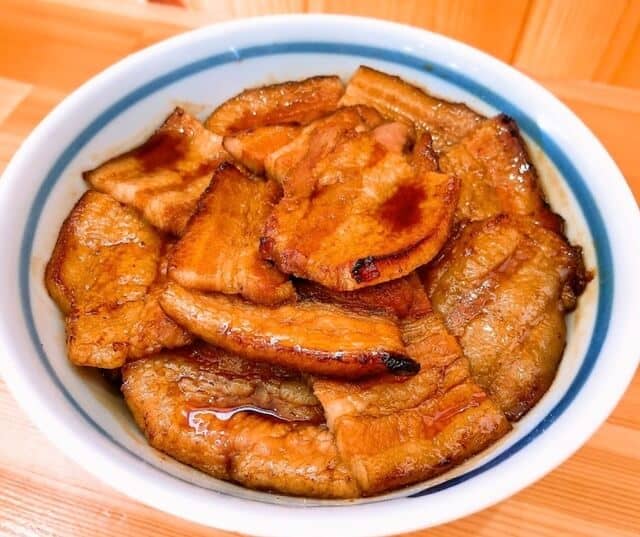
Locals visited this popular restaurant frequently because you can eat a large portion of high-quality meat at a reasonable price. They use raw meat from Tokachi. Each piece is cut by hand while avoiding the tendrils to bring out the deliciousness of the meat. At this restaurant, you can order by loin, ribs, and fillets. For the classic Obihiro pork bow
Takeaway
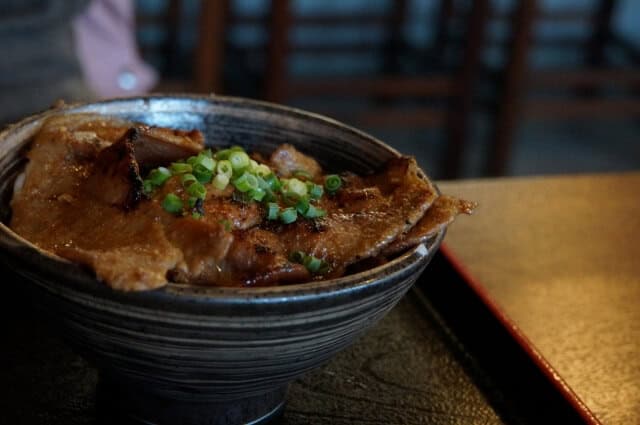
Butadon, a dish that consists of grilled pork over rice, is a simple dish with simple beginnings. In its hometown of Obihiro, specialty restaurants compete to make the best version of this classic dish. Restaurants try special grilling techniques and sauce recipes to make their butadon stand out above the rest. Visitors to Obihiro are sure to find a butadon that suits their particular tastes if they look hard enough.
There are some donburi or rice bowl dishes from Japan that I bet you would really love to have, such as Gyudon, Unadon, Uni don, Katsu don, and many more.
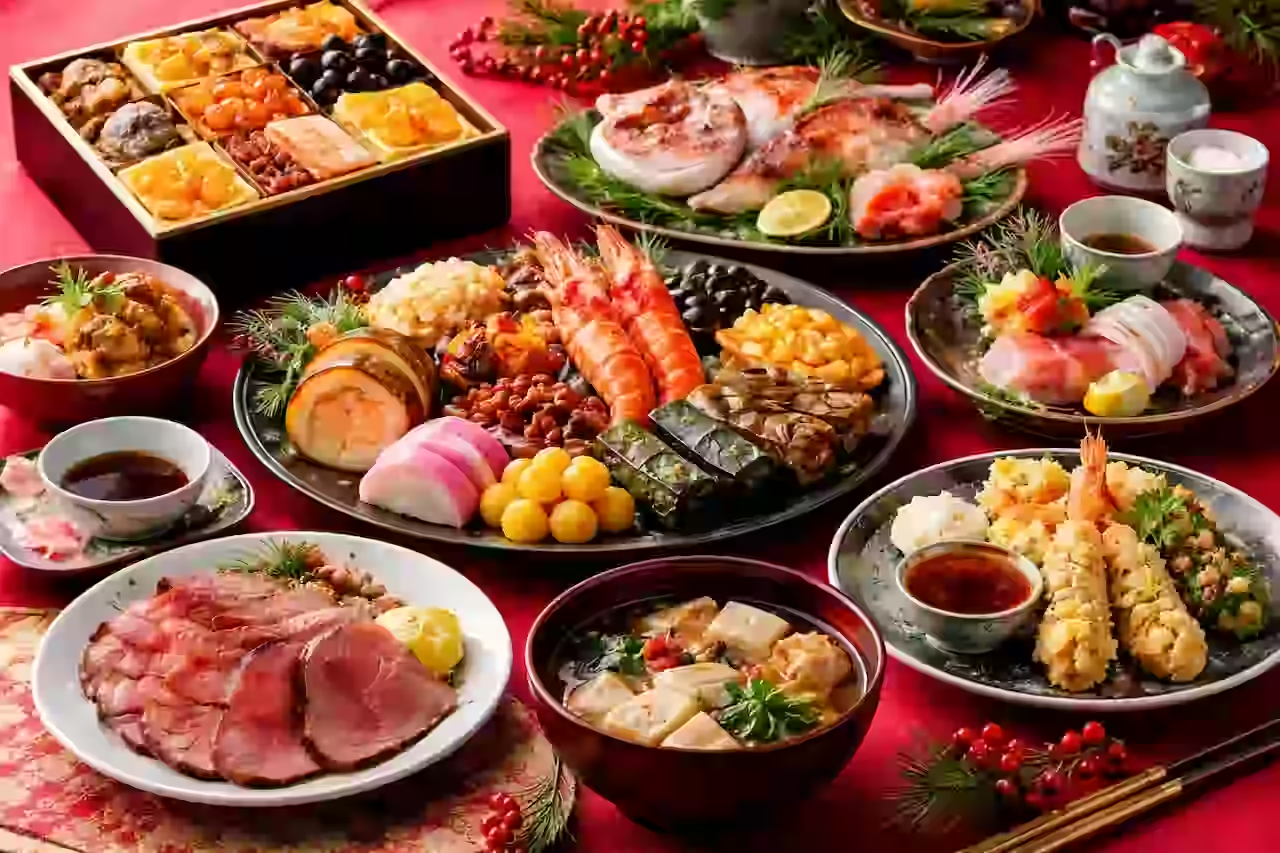
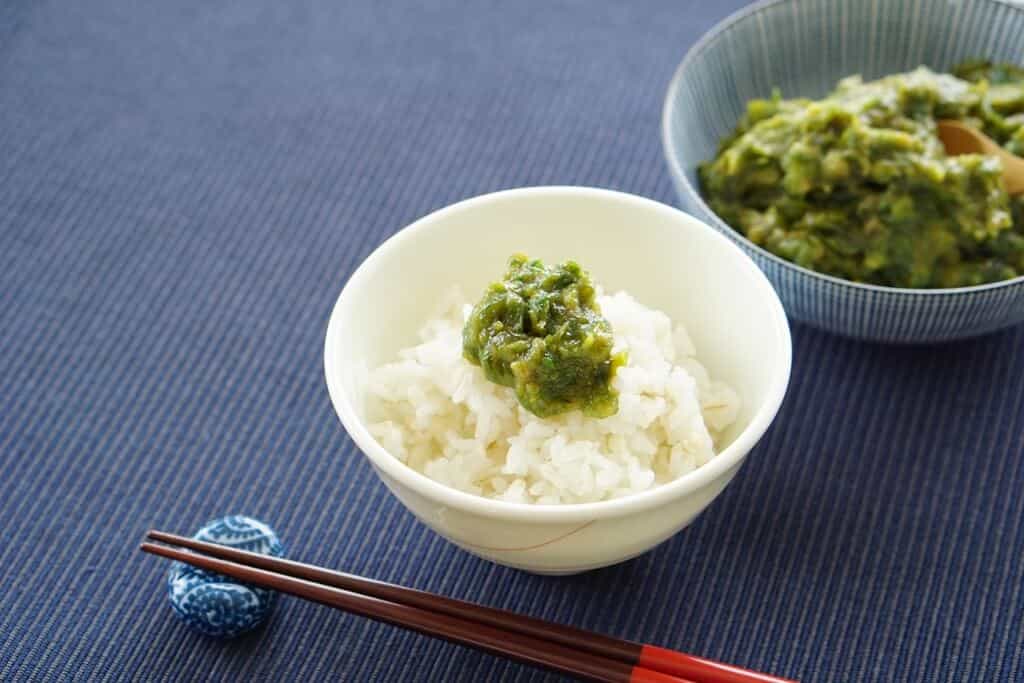
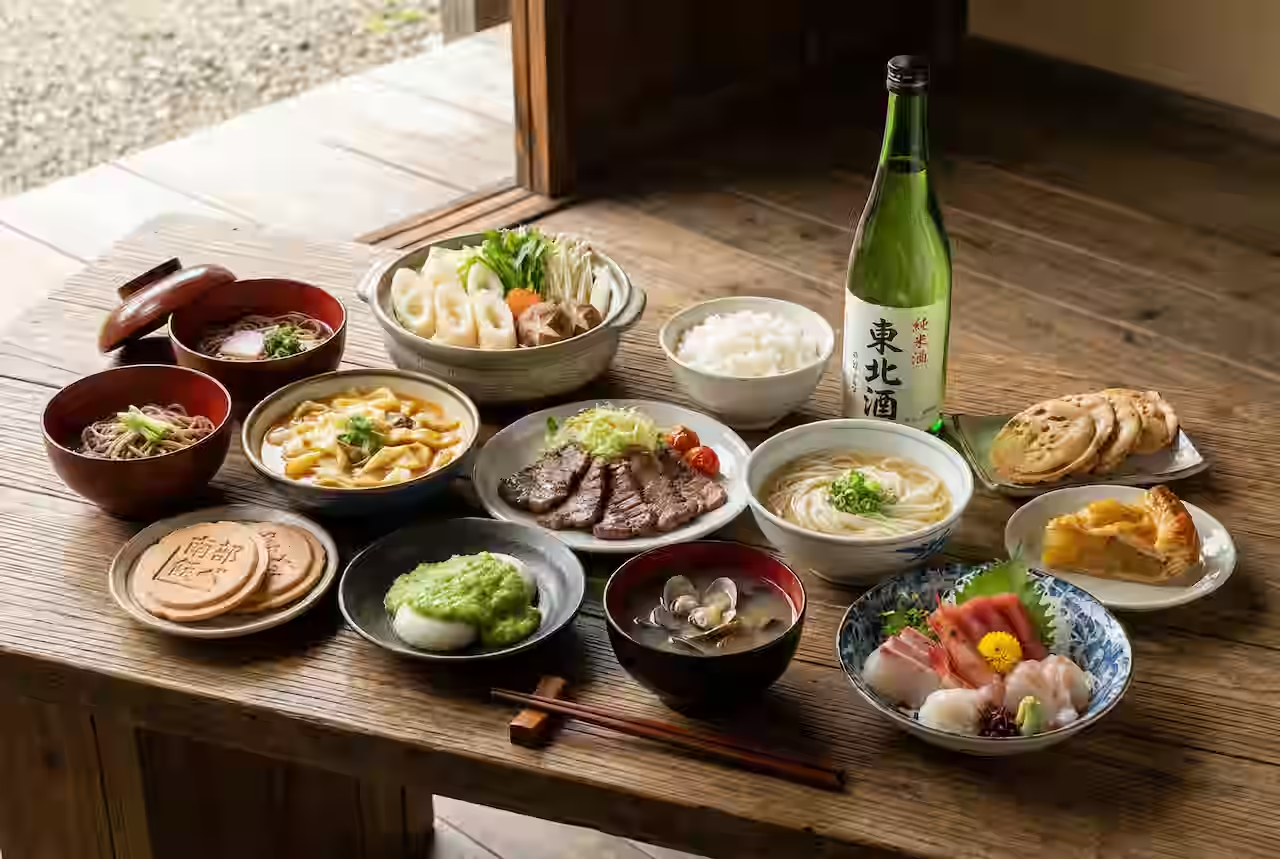

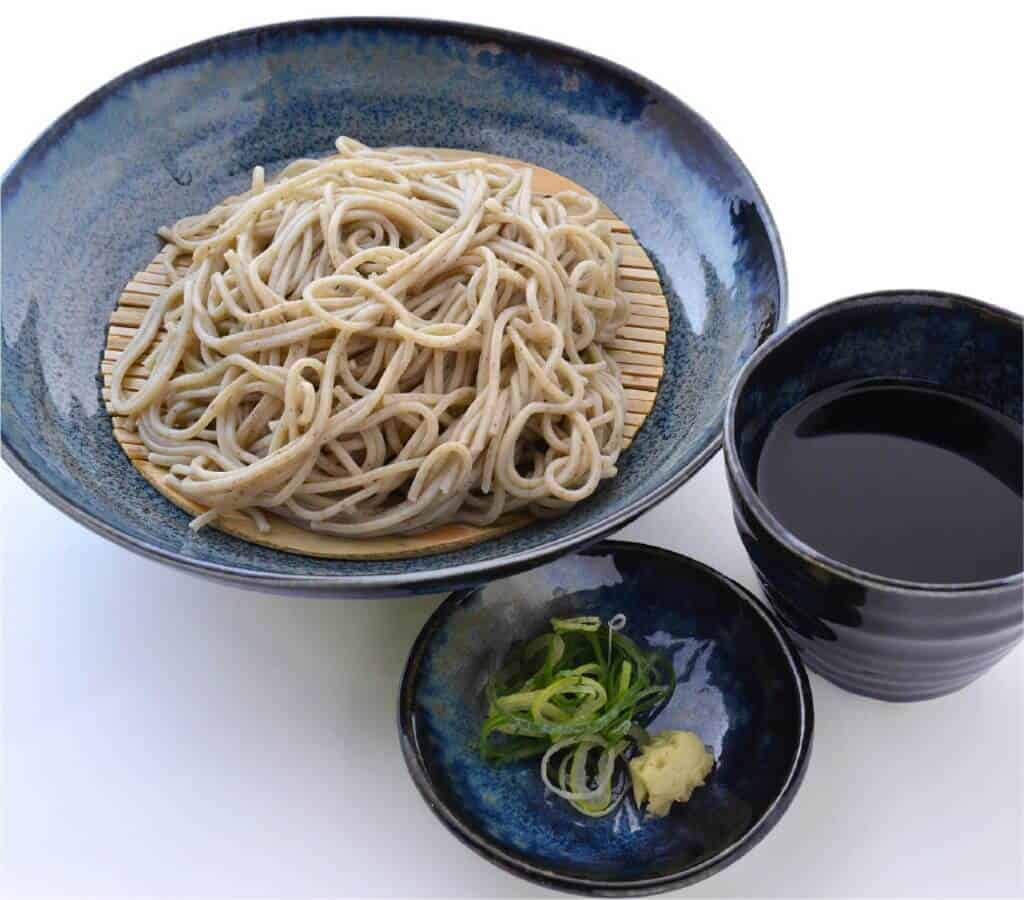

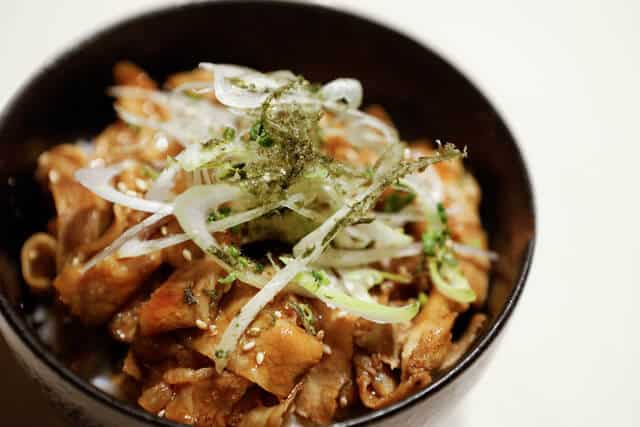
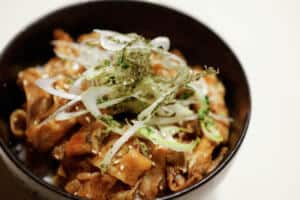

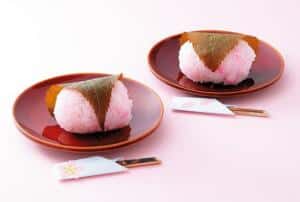
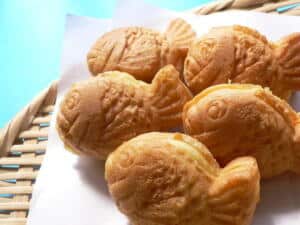
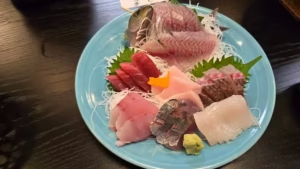
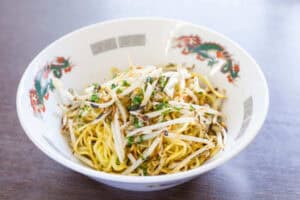
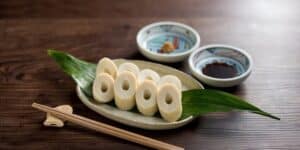
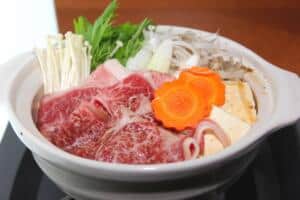
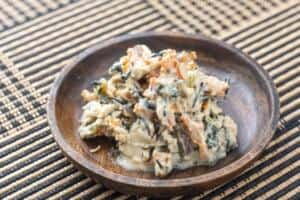
Comments